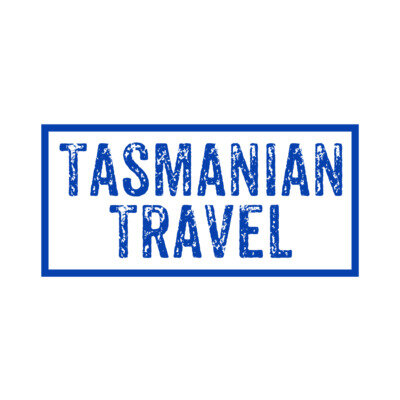
Tasmanian Travel: Contact Us Below at any time, even weekends !!
+61 03 6272 2645
damien@tasmaniantravel.com.au
Tasmanian Destination: Mt Wellington
Tasmania has so much to see that is impossible to do it all in 1 day or even 3 days really. That’s why Tasmanian Travel has a range of fantastic way’s to discover, admire & immerse yourself in what Tasmania has to offer. On offer here are Tasmanian walking & hiking mutli-day tours, as well as multi-day tours that focus on more of the classic attraction & location destinations in Tasmania.
Mt Wellington is one of the most iconic of the Tasmanian destinations that somebody can visit on their tours and travel of Tasmania. With more than 500 species of flora and fauna living on the Mt Wellington, various local historical references and having a favorite place in locals heart, Mt Wellington is a must visit.
Tasmanian Destination: Mt Wellington

Request a Tasmanian Multi-Day Tour or Transport Quote
Tasmanian Travel Destination: Mt Wellington
Kunanyi / Mt Wellington is a wilderness experience just a 20-minute drive from the Port of Hobart after pickup from the Cruise Ship terminal and is much loved by locals. It is one of the most fantastic places to admire the view of Hobart Town. When Hobart locals want to consider the day’s weather they look to Mount Wellington. Don’t forget to pack accordingly - it can often get down to 7 degrees atop the mountain.
The 21-km drive to the summit passes through temperate rain forest to sub-alpine flora and glacial rock formations, ending in panoramic views of Hobart, Bruny Island, South Arm and the Tasman Peninsula. The diversity of plant and animal life reflects the many micro-climates that exist in the park's perimeter. A total of 500 native plant species live here, including many endemic Tasmanian plants. A diverse range of fauna also call the park home, including dozens of bird species and a long list of ground animals including potoroos, pademelons, bettongs, bandicoots, possums, platypus and echidna.
No other city in Australia has a vista like this one atop Mt Wellington. The interpretation center at the top protects you from the blustering winds while an open viewing platform on the western side of the car park looks out to the World Heritage Wilderness Area beyond.
Please submit a detailed quote request to find out more information or more about the tour itself directly by clicking this multi day quote button.

Tasmanian Day Tours & Travel

Tasmanian Multi Day Tours & Travel
Tasmanian Travel Destination: Mt Wellington
Mount Wellington (Hobart) lies directly behind Hobart and is the city's dominant feature. It is 1,270 metres high and was formed during the Permian, Triassic and Jurassic ages. The Organ Pipes are the predominant feature, named for both appearance and sounds produced by the wind. The Van Diemen's Land Aborigines were the first to see the Mountain, calling it either Unghanyahletta or Pooranetere. The first white man to record its existence was Lieutenant William Bligh in 1788.
During early exploration the Mountain underwent many name changes, including Table Hill, Montagne du Plateau, Skiddaw, Mount Collins, and Table Mountain after its similarity to Table Mountain, Cape of Good Hope. Between 1822 and 1824 it was re-named Mount Wellington after the Duke of Wellington. George Bass was the first white man to climb the Mountain, in 1798.

Tasmanian Tours & Travel
Tasmanian Travel Destination: Mt Wellington
During settlement the Mountain's greatest asset was water, firstly from the Hobart Rivulet and later carried from mountain streams through an extensive system of aqueducts, pipelines and reservoirs to supply the town below. For over a hundred years Mount Wellington was exploited for its natural resources – timber, stone, food, ice, skins, ferns and seeds.
Timber was the main commodity – wattle, she-oak, stringy bark and blue gum – and was used for building and firewood. Tree ferns were cut down and used extensively for decoration and lined the streets and arches during the Royal Tour in 1901. Concern by conservationists and tourist promoters regarding denudation began in 1870, but it was not until 1906 it was declared a Public Park.


Tasmanian Travel Destination: Mt Wellington
The cliffs, boulder fields, swamps and gullies provide diverse habitat for fauna and flora During the nineteenth century Mount Wellington became a mecca for botanists. Examples of flora and fauna were sent to England for examination and classification and many still bear the names of the botanists who collected them. New discoveries continue to be made. Over 400 plant species are found on Mount Wellington while 62 species of birds were recorded in 1976. Animal life is mainly nocturnal. Snakes, frogs and lizards are common during the day. A living fossil, Anaspides tasmaniae, a tiny freshwater shrimp, was recorded in 1837.
Mount Wellington has a vivid history. It has been devastated by fire and flood; the scar of a major landslip is clearly visible. It has provided sites for weather stations, AUSSAT's Barth Station and telecommunication facilities. Recreational purposes have included bushwalking, foot racing, cliff climbing and sightseeing. Many huts were built on the Mountain and by the 1930s a network of tracks existed. The Mountain was also popular with skiers, but lost favour when the snow became unreliable. The Pinnacle Road, opened in 1937, enables easy access to the top. Mount Wellington continues to be Hobart's major tourist attraction, offering spectacular panoramic views of the city, river, land and sea below.
